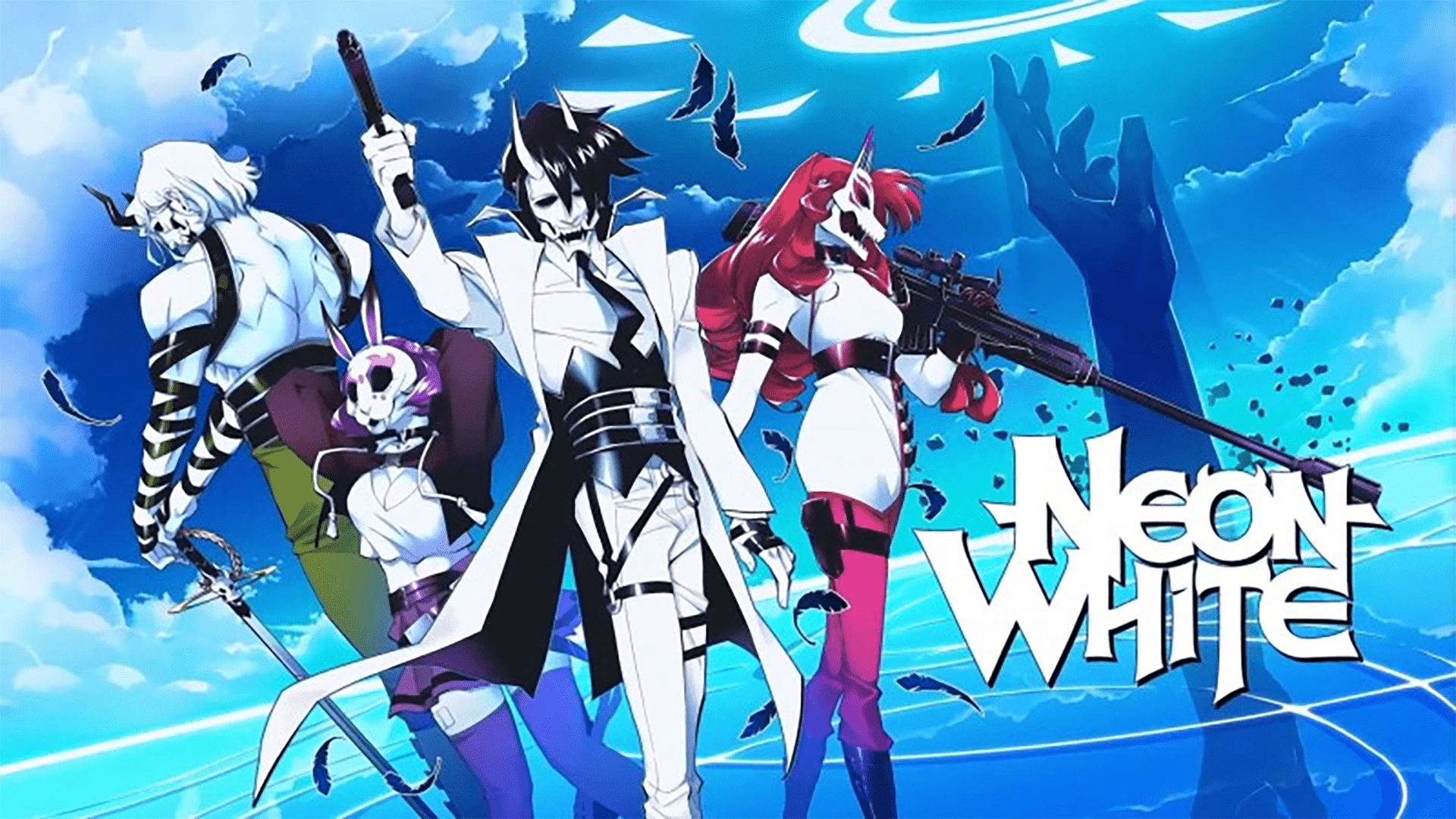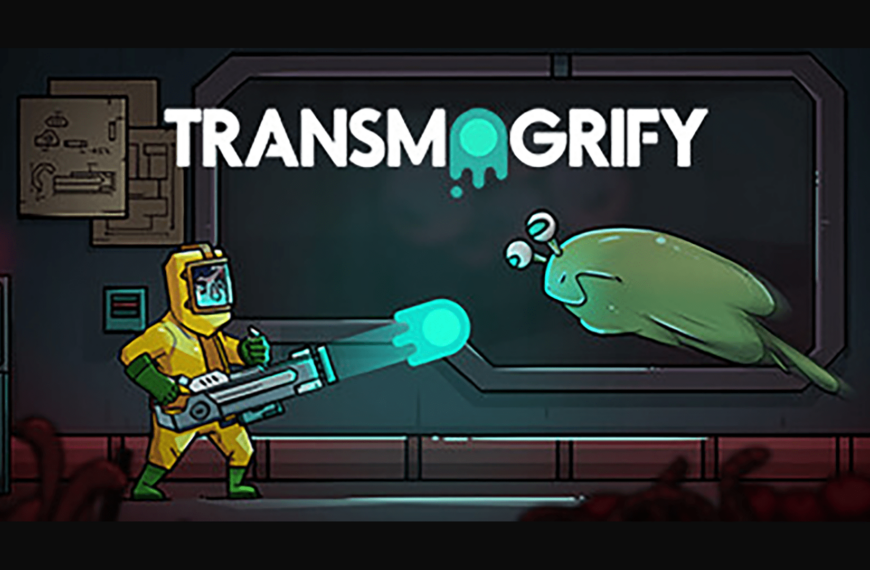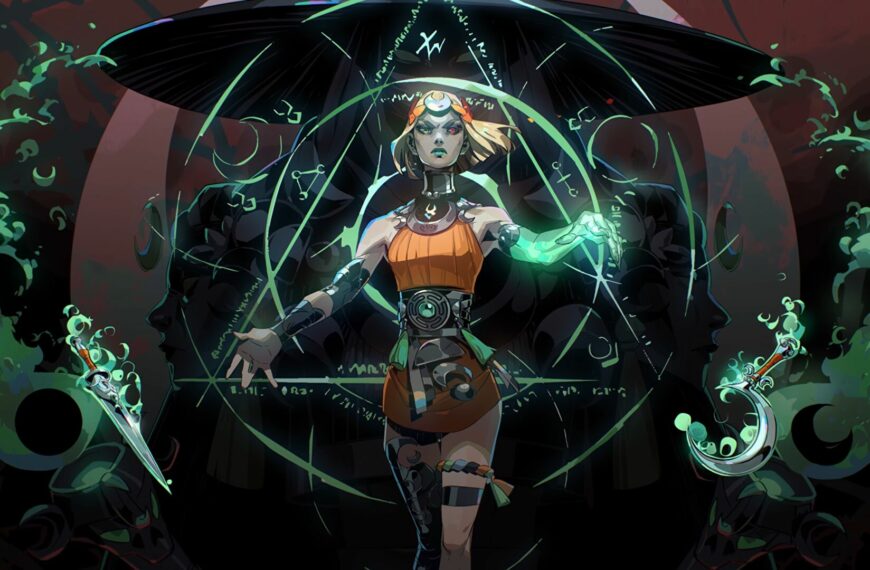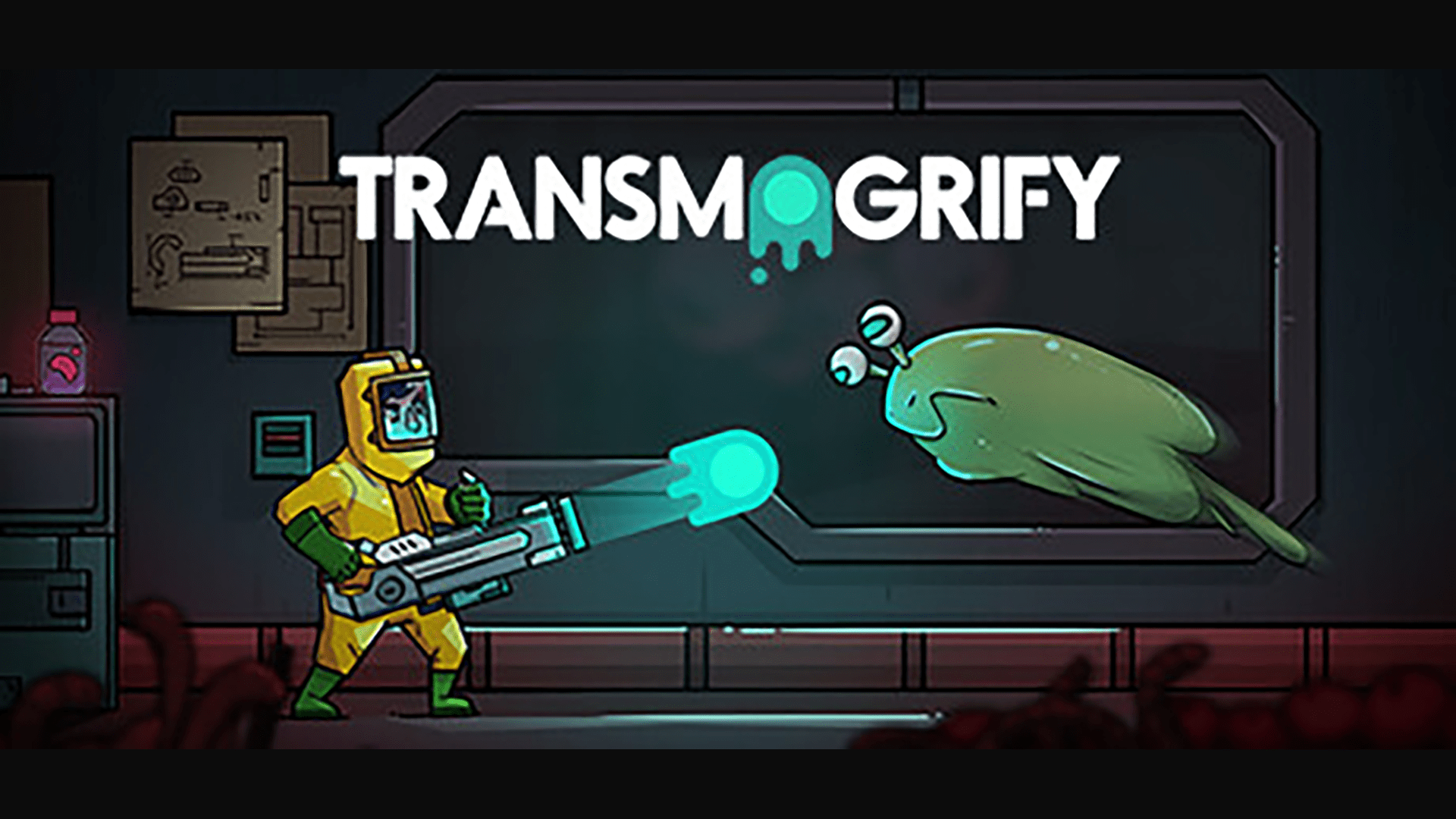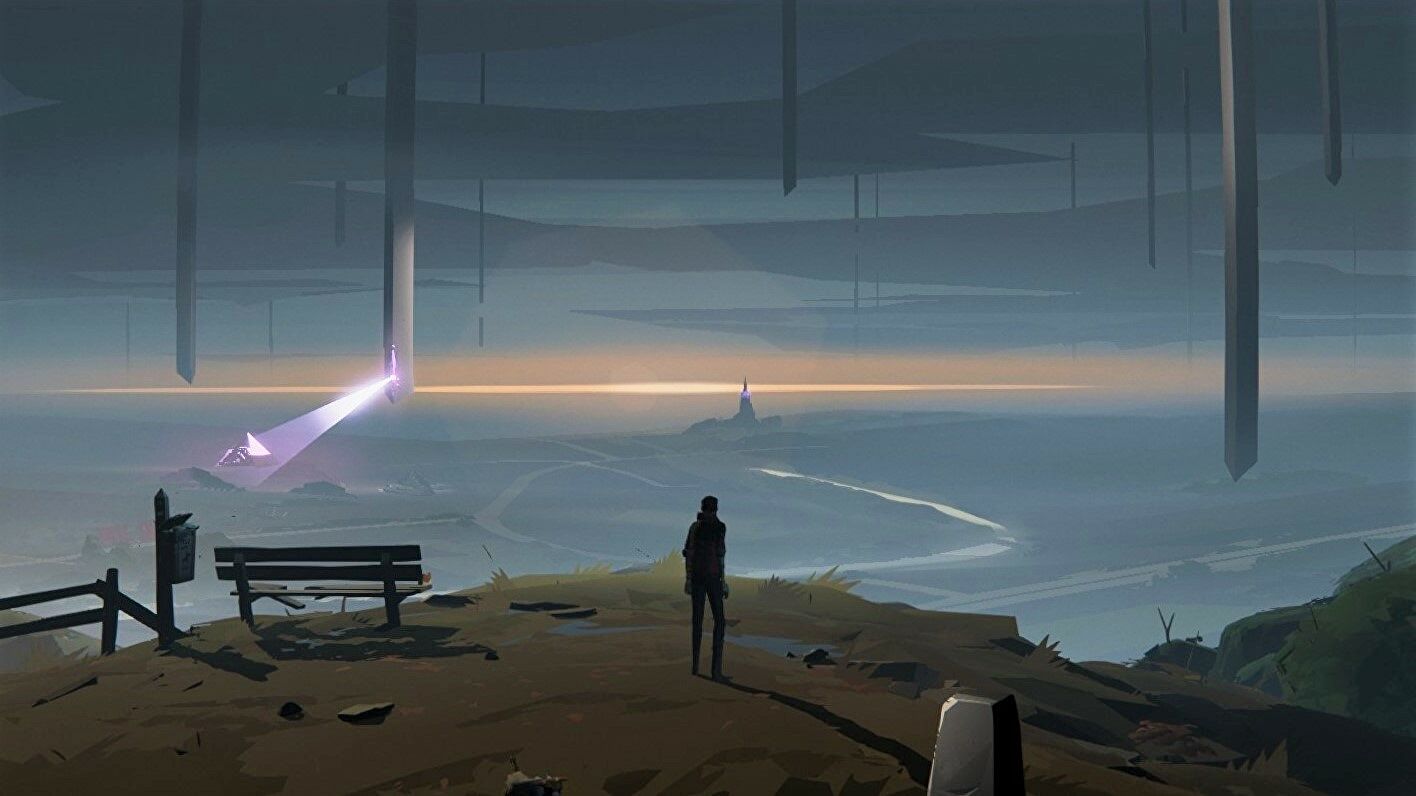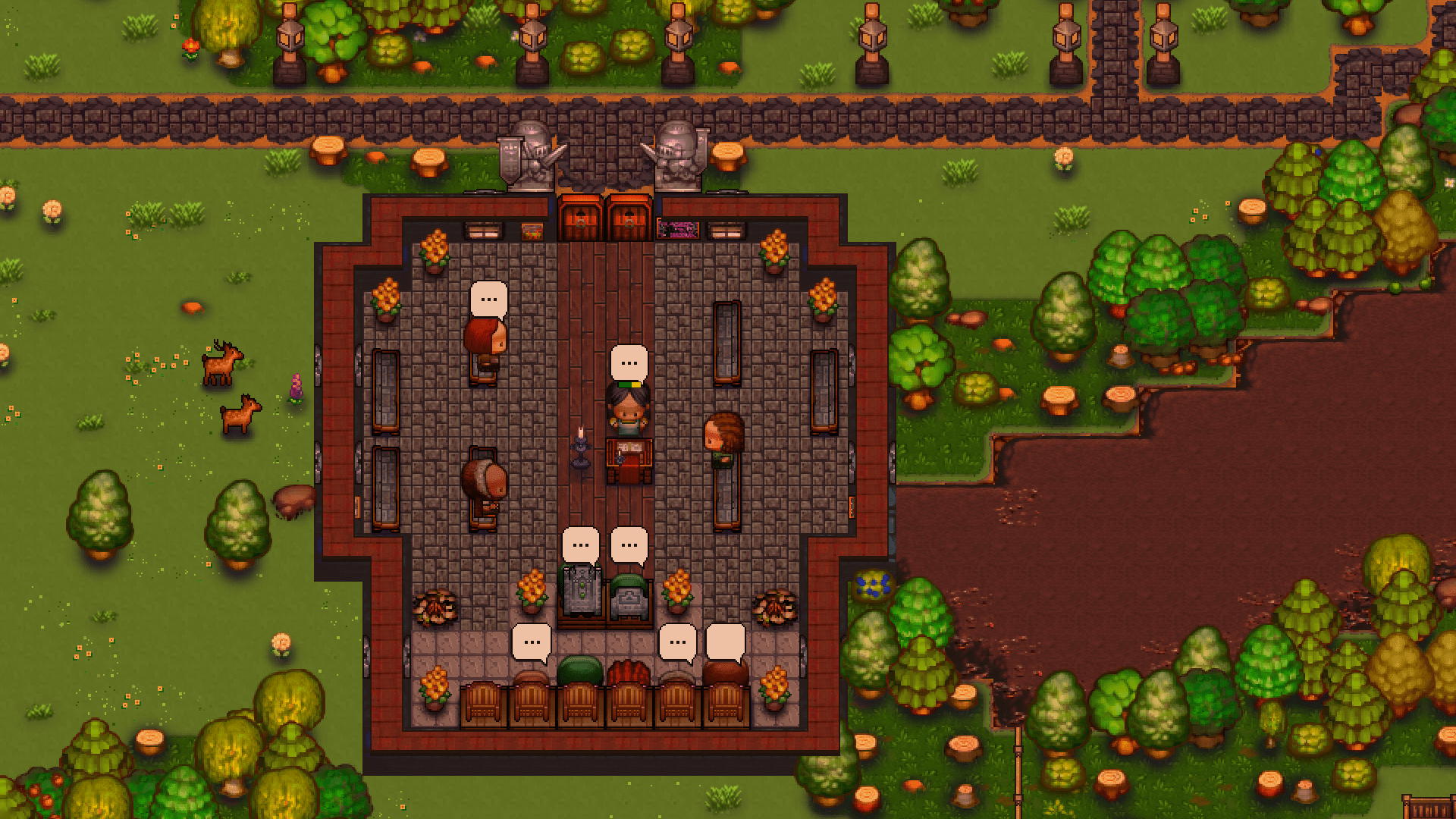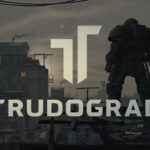Neon White is a game that has been on my radar for some weeks, but to be perfectly honest I probably wouldn’t have played it if not for this review, largely because like all good game reviewers, I am bad at video games. God help me when it’s time to review a Soulslike.
Neon White is a high-speed first-person shooter parkour card game with visual novel elements, and I’ll give you a moment to process that statement. You play as the titular Neon, a sinner from Hell brought to Heaven for ten days as part of a competition to slay an overabundance of demons encroaching on paradise. To this end, you need to run and gun as fast as possible.
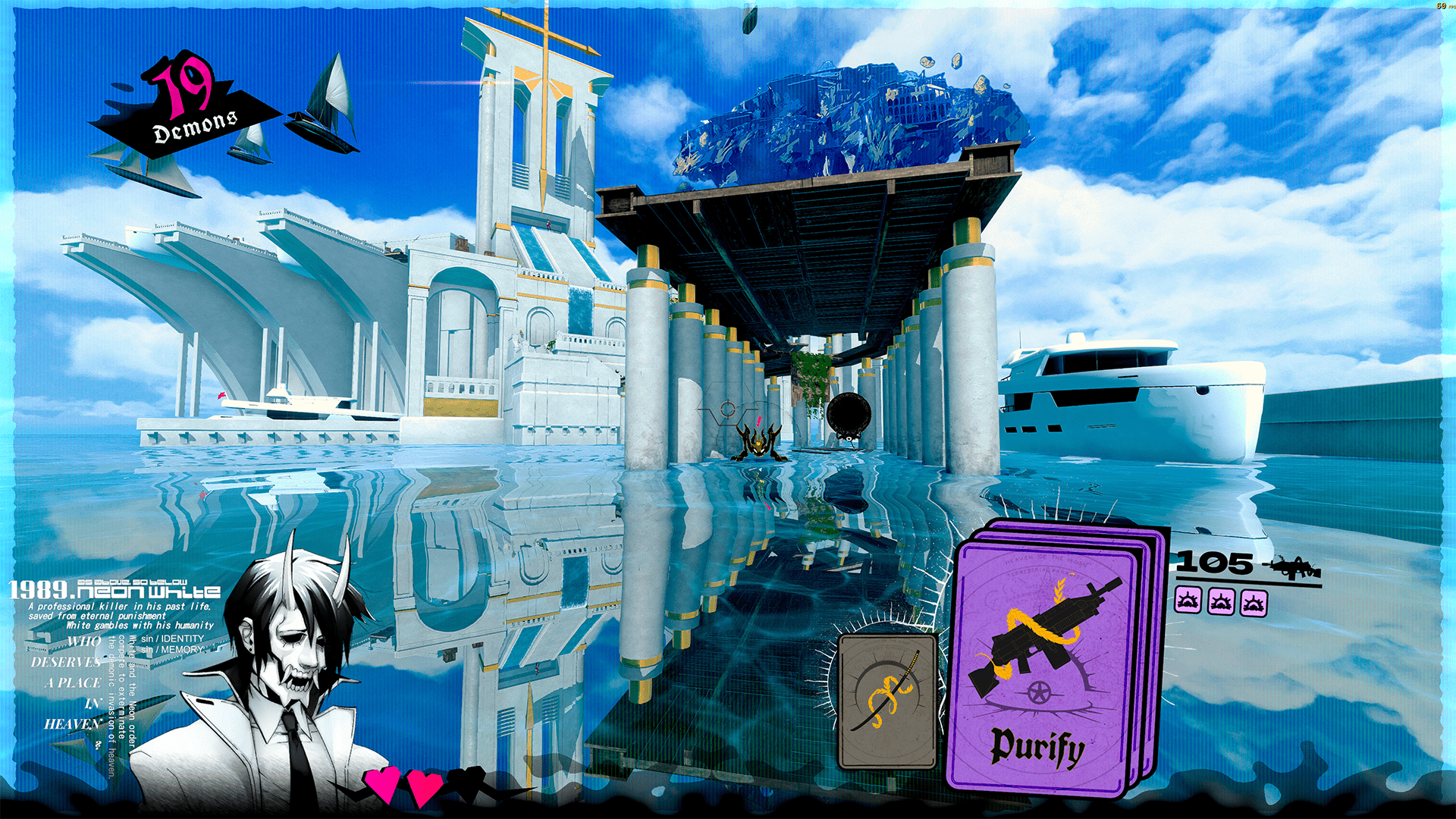
10 Days Until Judgement
Let’s break down every genre I listed Neon White as being part of.
The gameplay is divided into Missions, each of which has a series of levels to complete. Your job is to get from the start of the level to the level goal as fast as possible while killing every single demon in the level. So far so standard. So where do the cards come from? Well, Neon White doesn’t actually have weapons. You instead have Soul Cards that represent weapons and serve as weapon pickups. However, once you run out of ammo for a specific Soul Card, it’s gone and you need to find another one. Additionally, you can only hold two Soul Cards, as well as Neon White’s katana.
Where Soul Cards get really interesting is that you can discard them for additional benefits. Each Soul Card has its own unique Discard effect, from giving you a midair jump to rushing ahead horizontally or turning you into a fireball that flies where you look or a grappling hook, among others.
The meat of this game is not shooting at demons. Frankly, most demons aren’t even a threat to you. What they are is obstacles in your way, or something that could add time to your run if you haven’t figured out a good way to kill them without leaving the faster path. There are several demons who solely exist as mobility options or to limit your mobility somehow.
Figuring out how to chain your movements and interactions with demons for the best time on a level is where the challenge in this game comes from. Or, most of it. Because I also said that this game has Visual Novel elements, and I’m sure you’re dying to know what that’s about. Here’s the deal: every time you complete a level for the first time, you unlock the hidden present somewhere in the level. These are more like environmental puzzles than speedrun challenges, as many of them require you to deliberately go slower in order to avoid discarding your Soul Cards that you might need to reach a high ledge or break through a destructible wall or floor. Collecting a gift automatically ends your run so you don’t need to worry about getting back to the level goal with the gift, which is good because many of them are suspended over bottomless pits and you don’t actually have a way to get it back to safety.
In between Missions, you have access to Central Heaven, which is the Visual Novel section of this game. There are several locations around Central Heaven that you can visit via menu interface to speak to the other Neons there. By giving them the appropriate gifts you collected from the levels, you gain Insight into that character. As your Insight grows, you unlock various things, like decorations for White’s room, dialogue with that character, and Side Quests.
Also Read
Transmogrify PC Review: The Best Way To Defeat An Enemy
Transmogrify is a game with a strong central idea let down by a shoddy execution resulting in an experience that is…
Defy the Gods as a Witchy Moon Goddess in Hades 2
Supergiant announces Hades 2 for 2023 at the 2022 Game Awards. The sequel promises dark sorcery, witchery, and more frenetic roguelike…
Side Quests, despite the name, are not really quests at all. They’re bonus levels themed around the character of the specific Neon you’re talking to. While the game tracks your time for these levels, unlike the main Mission levels there is no reward for doing them quickly, and survival is honestly a higher priority in these levels.
Like any speedrun platformer, this game lives and dies entirely on its level design. A single platform out of place could easily destroy the entire game flow. Fortunately, Neon White does everything right. The levels are all cleverly laid out so that even the stages that loop back around themselves are clearly telegraphing where you’re supposed to go next, and the Soul Cards are exactly where they need to be.
Since combat is not as important as speed, the enemy variety is fairly limited. There’s a single enemy for each Soul Card, a generic enemy, mimic chests, and tripwire, plus the Bubble Demon that’s more of a mobility aid than an enemy, and the bullet-proof bubble demon that protects other demons from you but dies the moment you move out of it.
Instead, it’s the placement of these enemies that matters. The enemies that drop Soul Cards are placed where you need those Soul Cards, usually set up to chain their cards together for a rapid series of kills as you dart around the stage. Flinging yourself wildly through the air while slaughtering the legion of Hell as you pass is incredibly satisfying.
Characters aren’t the only things that give Insight in this game. Every time you complete a level, White gains Insight into the level layout. Depending on your rank –Bronze, Silver, Gold, or Ace— you raise your Insight to the appropriate level out of four. Gifts are unlocked at Insight One, but if you cleared the level you got at least a bronze, so you’ll always unlock those on your first complete.
The really interesting thing that insight gives you is the Level Hint, which demonstrates a shortcut you can use to shave some seconds off your run. Sometimes you can shave a lot of seconds off your run.
These hints are optional and can be disabled before your run if you like figuring things out on your own, but I honestly think they should’ve included hints towards the gifts because some of them are really tricky to find, much less reach.
While this game is overall excellent, I do have a few nitpicks. The level geometry is a little too detailed sometimes, and you can easily ruin a run on accident by getting caught on the lip of a platform or window or whatever. I mentioned a moment ago that I wish it was easier to find some gifts, and I’m not ashamed to admit I looked up several of their locations or how to reach them.
The game also seems to think it’s more clever than it is in a somewhat mean spirited way. There are two different achievements for getting killed by mimics, but you have no way of knowing that mimics explode into a ring of instant-death bullets until you kill one, and the first one you encounter is positioned specifically to encourage you to shoot it. Not only does it look like a chest, but mimics are very obvious up close, and this is a game about shooting demons. Of course I shot the mimic even knowing what it was! Why wouldn’t I?
There’s also Idiot Island and the associated ‘Idiot’ steam achievement for ending up there, but I have to admit that one was actually pretty funny.
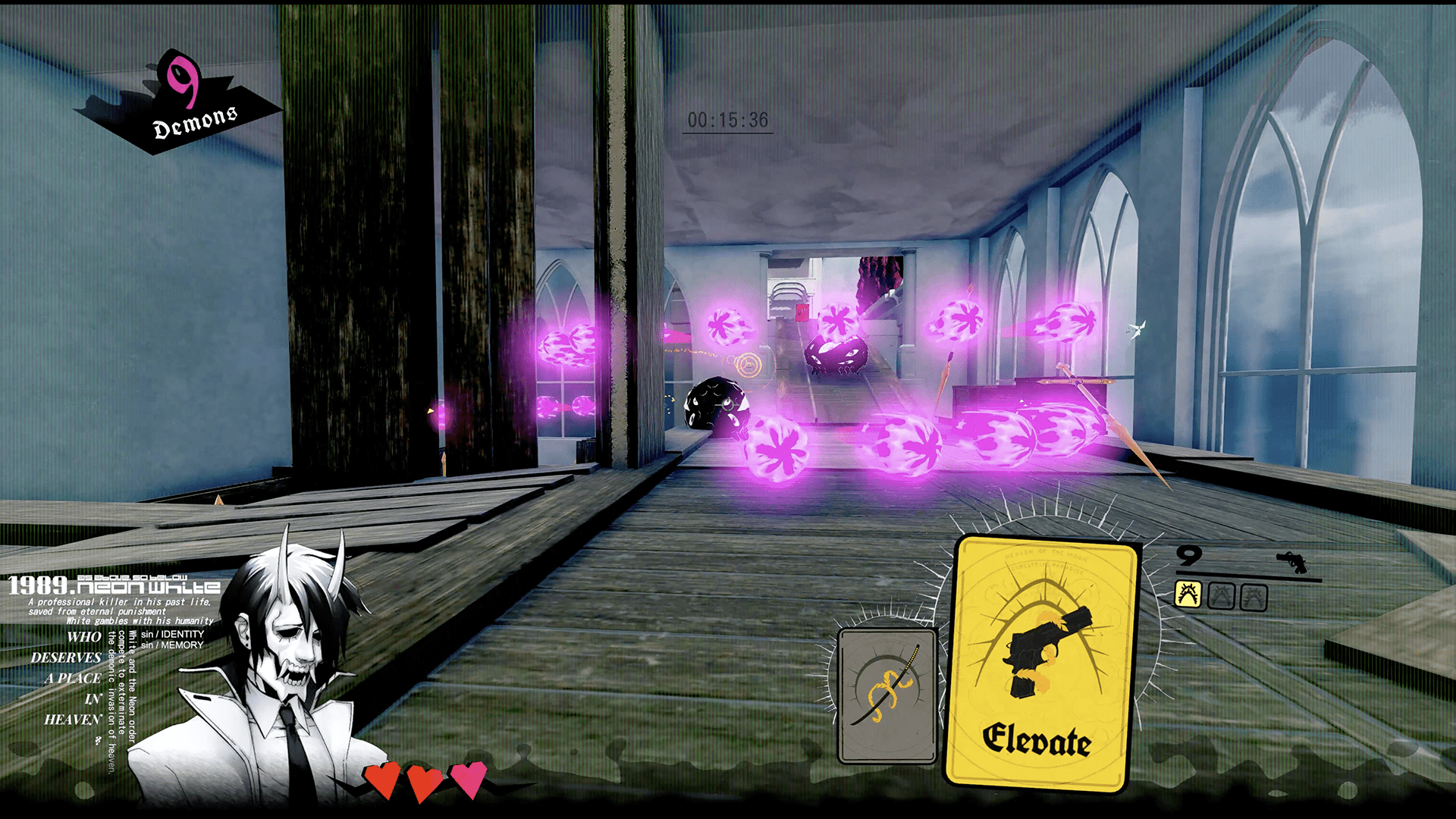
The Cure That Burns
The visuals in this game are striking. Each region of Heaven that you gun your way through has its own distinct style, from the wooden docks and marble of the Glass Ocean to the towering blue and orange skyscrapers at Heaven’s Edge. It’s impossible to mistake one part of Heaven for any other.
While you rarely see them, the character models do an excellent job of translating the visual novel character portraits into 3D, and their animations as they run around the stages are impressive.
The enemies are color coded to tell you exactly what you need to know about them, their attacks are bright and pop against the background. Each demon has an interesting design that’s very different to any of the other demons. Even running across the stage at full speed, you’ll never mistake one demon for another. Which is good, since it lets you know immediately what Soul Card they’ll drop for you.
The environments are all incredibly detailed and beautiful. The water in particular looks incredible, but there’s also the grass and trees on some levels. There’s also props lying around the levels, like pots or trees or lampposts. And while these are sometimes useful for getting the hidden gift in the level, they’re usually only there for decoration.
There was a level in this game that actually killed my first attempt at it because I spent so long sightseeing instead of running through it.
The game’s soundtrack gives me some strong Jet Set Radio/electric music vibes and I love it. Each Mission has its own song, and they’re all good. Even the title screen theme is a jam.
The sounds are all quite strong, with each Soul Card having its own sound for picking them up as an audio cue to tell you what you’re holding and a higher pitched version of that sound on a discard.
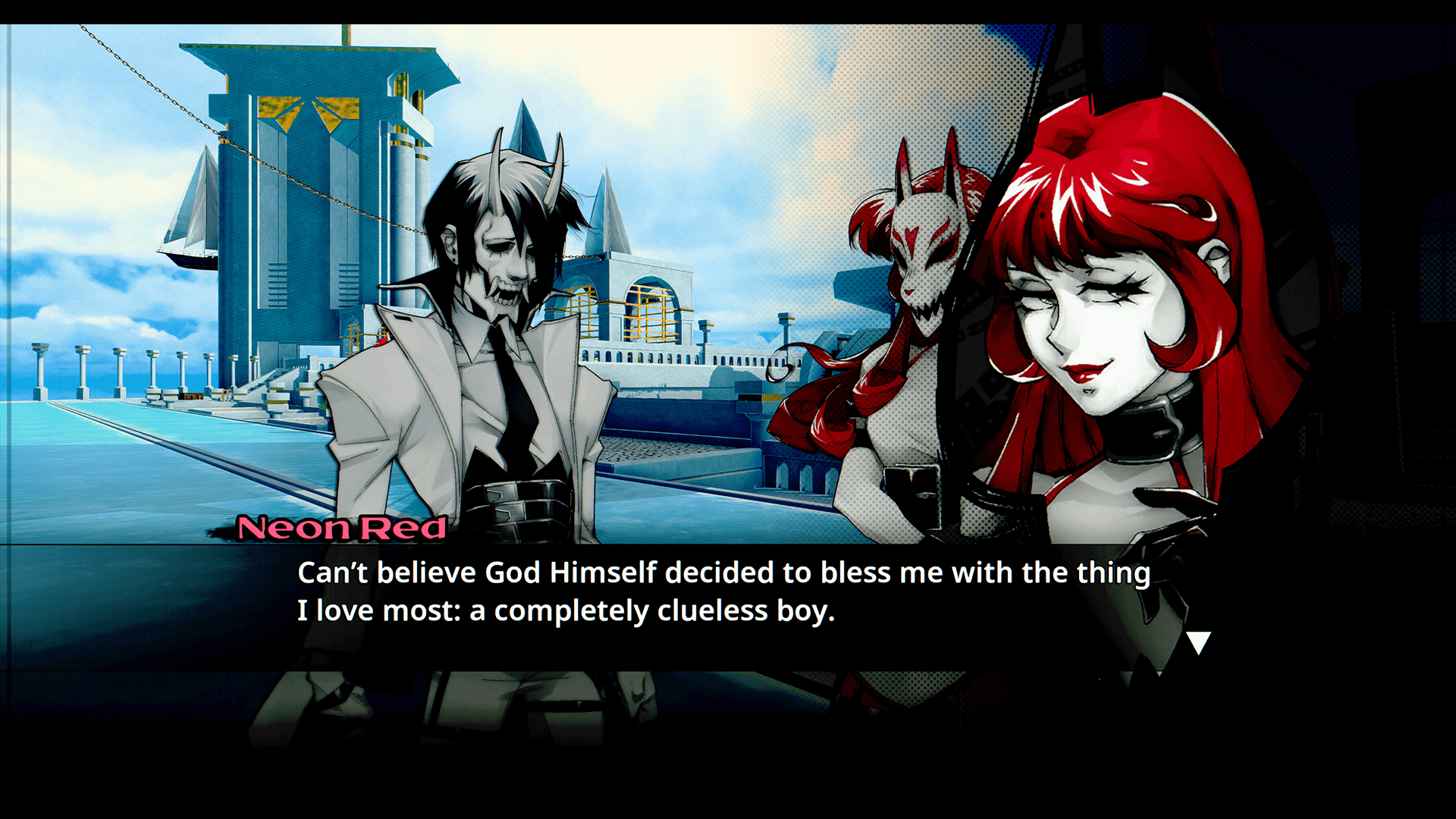
Rigged Game
The annual Ten Days of Judgement are upon us, so the story goes, and that means that demons are in overabundance and invading Heaven again. To deal with this problem, the Believers have called forth sinners from Hell, the Neons, and tasked them with exterminating the demons. Whoever is the best demon exterminator by the end of the Ten Days shall be granted forgiveness from God and allowed to remain in Heaven.
This is Neon White’s first time at the Ten Days, and he’s desperate for that forgiveness. It’s a shame he doesn’t quite remember why he’s so desperate for atonement. Or anything else, really. In an unusual twist on the Amnesiac Hero, pretty much everyone else in the game knows exactly who White is and what he’s done. The real question is how much of it they want to share.
The story of Neon White is a fairly straightforward one about not letting yourself be consumed by the past—and, specifically, by grudges. This does mean that you can read the text as implying victims of abuse should forgive their abusers, as Neon Green is written to be very recognizably emotionally manipulative, but I’m pretty sure they were aiming for ‘letting go of the past and moving forward for your own sake’ and not ‘forgive others because they necessarily deserve it.’
The cast have their own quirky personalities with a surprising amount of depth to them, mostly found through the conversations you have if you get them their gifts. The mystery surrounding the Believers and the Tend Days of Judgement is compelling, as is the emotional arc of Neon White learning who he was and what he did.
I was worried at first that the dialogue sections would interrupt the fast-paced and frantic gameplay, but I’m relieved to say that they don’t. Dialogue only happens between levels, and only on your first attempt. Replaying stages for faster times or finding the hidden gifts won’t replay that dialogue. And most of the dialogue happens between Missions at Central Heaven, as I mentioned earlier.
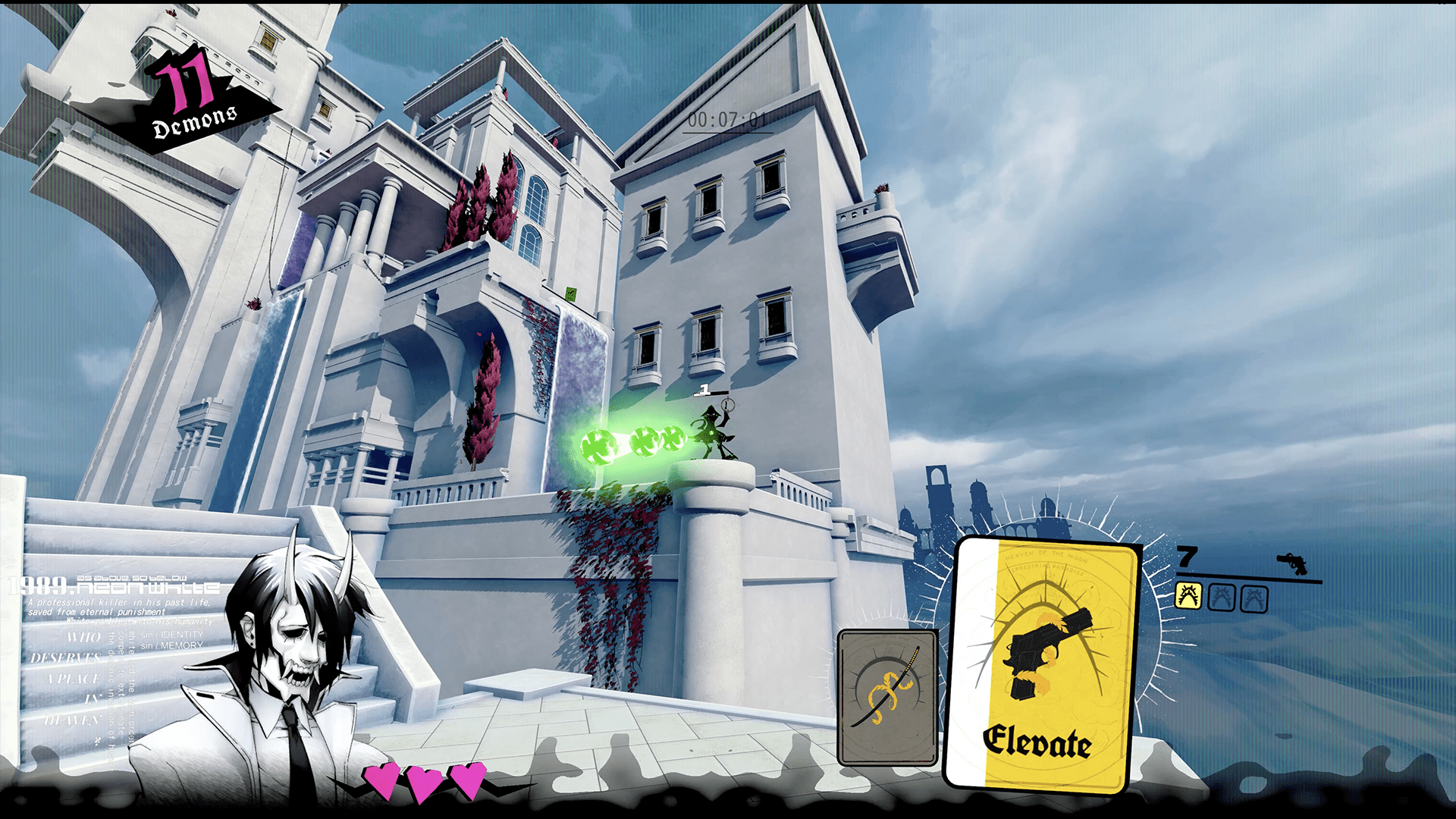
Conclusion
Neon White packs a lot of replayability into itself with the challenge and satisfaction of finding the fastest way to clear each level. I’m not usually one for games like this but even I on occasion found myself itching to retry a stage for a better time even after I’d gotten the Ace medal. This is a simply superb speedrunner and the story is surprisingly contemplative for the genre.
Our Rating
Gameplay
Story
Visuals

